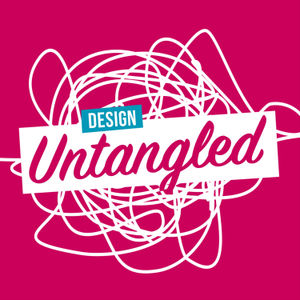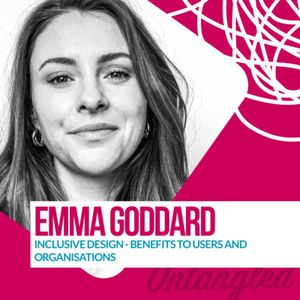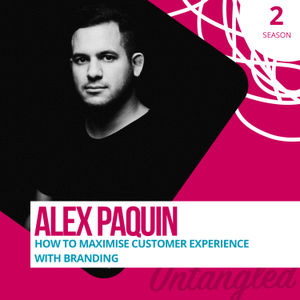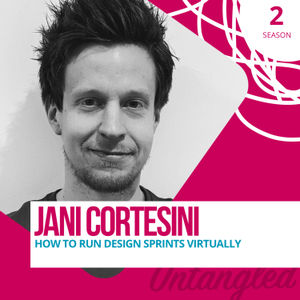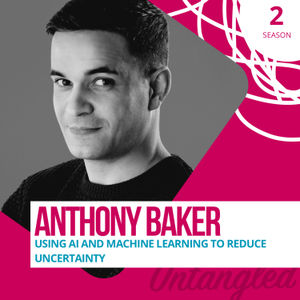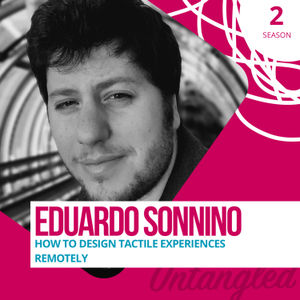Recent Episodes
We’ve partnered with ProtoPie, the future of interactive product design, to help you navigate through uncertainty and overcome the challenges today's unprecedented conditions have brought to the industry. Join us for Season 2 - Designing for a new level of uncertainty.
Advertising and branding have been around as long as there have been things to sell. What new and innovative approaches can brands use to maximise their marketing impact and deliver solutions that satisfy today’s ever changing customer needs?
How do different cultures affect the approach for creating and marketing products and how does the marketing itself have to change to appeal to customers?
What techniques can be used to explore creative ideas that aren’t necessarily part of a brief provided by a client? How can this culture be embedded in an agency’s way of working?
About our guest
Alex is the Chief Executive Officer, and founder of Zerotrillion, a global
creative agency that provides services to organisations in different continents, with very diverse cultures and approaches to marketing.
Alex has worked at a number of agencies during his career in Dubai, Amsterdam and Toronto. He brings a wealth of experience from his background in criminology and social psychology and applies this to creating experiences for well-known and upcoming brands.
What you’ll learn
- What do creatives do in an advertising agency?
- How can behavioural psychology be used to form part of a design or marketing approach?
- What is unique about brands and their customers in Dubai?
- How do you create brands for future looking brands and ideas like sustainability?
- How are you are brands and marketers adapting to the changes that have happened in consumer the landscape in 2020?
Show notes
We’ve partnered with ProtoPie, the future of interactive product design, to help you navigate through uncertainty and overcome the challenges today's unprecedented conditions have brought to the industry. Join us for Season 2 - Designing for a new level of uncertainty.
Design Sprints have been around for quite some time. It is a process that has been created by Google and adopted by many. It allows businesses to get answers to strategic questions quickly, using design thinking methods and tools.
The ZOO, Google's creative think tank for brands and agencies, has adopted and implemented Design Sprints as a way of helping brands quickly ideate, iterate, prototype and test creative ideas that then get implemented and launched.
During lockdown and due to people not being able to get together in a workshop environment, Design Sprint Masters have had to utilise different tools and methods of facilitation, and have had to change the process to fit with the new reality.
In this episode you’ll learn more about how they’re doing it at Google ZOO, what they’ve learnt in the process so far, what has worked and hasn’t worked as well as tips to make your remote sprints successful.
About our guest
Jani runs Design Sprints to help brands and agency partners solve business problems through user insight, Google Technology (from Machine Learning and Voice Interfaces to YouTube Content and Data Driven Creative) and rapid prototyping.
What you’ll learn
- What problems do Design Sprints solve?
- What’s the best thing about Design Sprints?
- What are some of the challenges clients have implementing them?
- When shouldn’t you use a Design Sprint?
- What are the challenges in running Sprints remotely?
- What are some of the benefits of facilitating things remotely?
- What methods have had to change due to the pandemic?
- Are Design Sprints as effective when not done in person?
- How does prototyping work in a remote environment?
- How have Design Sprints evolved over time?
Show notes
We’ve partnered with ProtoPie, the future of interactive product design, to help you navigate through uncertainty and overcome the challenges today's unprecedented conditions have brought to the industry. Join us for Season 2 - Designing for a new level of uncertainty.
Design and the technology used to implement it, have always been two sides of the same coin. How can these two disciplines come together and utilise new technological tools like artificial intelligence, language processing and machine learning to deliver better experiences? Can these technologies help Designers make more informed decisions and mitigate risk?
Different cultures can also impact the challenges Designers and Technologists face. How is the Japanese digital landscape different to the UK and what opportunities does it bring for creativity?
About our guest
From Costa Rica in South America to Japan, Anthony Baker has a very interesting and international trajectory. Currently, he is Executive Technology Director at R/GA. He was based in London and then moved to Japan, learnt the language and now manages teams and clients in the region.
What you’ll learn
- How does the design and business culture differ in Japan and what are the challenges?
- How can you overcome a culture of consensus and lack of risk taking to push boundaries?
- How can technology and design work together to create digital experiences that meet user needs?
- How can you get clients and stakeholders involved in prototyping?
- How can artificial intelligence and machine learning enhance the experiences we can build for customers?
- How does technology allow you to make better design decisions?
- Should design and user needs drive the technology we use or vice versa?
- What changes have there been around the digitisation of internal platforms in Japan to help ways of working during the pandemic?
Show notes
We’ve partnered with ProtoPie, the future of interactive product design, to help you navigate through uncertainty and overcome the challenges today's unprecedented conditions have brought to the industry. Join us for Season 2 - Designing for a new level of uncertainty.
If you are a digital designer you may be used to designing experiences for existing hardware your customers may use, such as a smartphone or tablet.
But how do you approach designing for an entirely new device?
How do you ensure both new hardware and the software on it meet customer needs and work together as a seamless experience? And how do you test this experience that’s been designed in the hands of real customers in the middle of a global pandemic?
About our guest
Eduardo is a Senior Product Designer at Microsoft and was most recently involved in the development of the new Surface Duo and had to come up with different ways to respond to new customer needs due to the Coronavirus pandemic.
The Surface team sits at the interjection between software and hardware and involves both hardware and software engineers and designers. Eduardo talks to us about how these disciplines come together to create unified experiences for customers.
What you’ll learn
- How do hardware and software come together to form new experiences?
- How do you prototype experiences that involve hardware and software elements?
- What techniques can you use to test both hardware and software when there is limited access to users for usability testing given the Covid-19 restrictions?
- What teams and skill sets do you need to create these combined experiences?
- What challenges are there in testing hardware with customers during a pandemic and what research approaches can you use?
- How have customer needs around personal technology and home tech changed as a result of the increased time we are spending at home?
- How does a hardware and software team come together to make design decisions around the hardware itself?
- What things can you learn from users only when a product is post-release?
- How do you test for human factors such as neurology or ergonomics during the design process?
